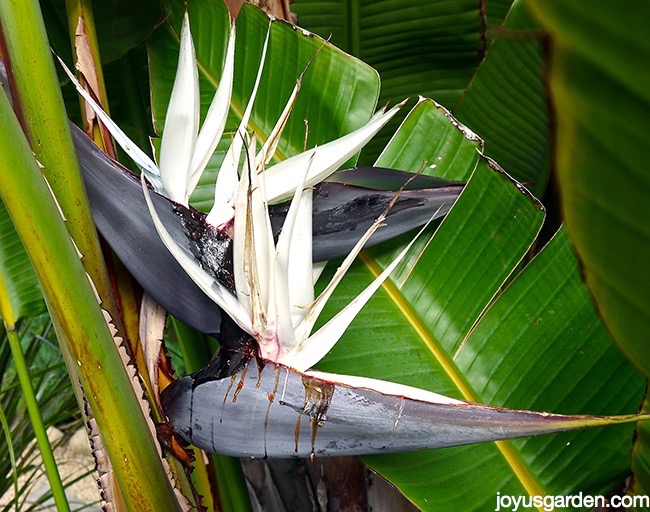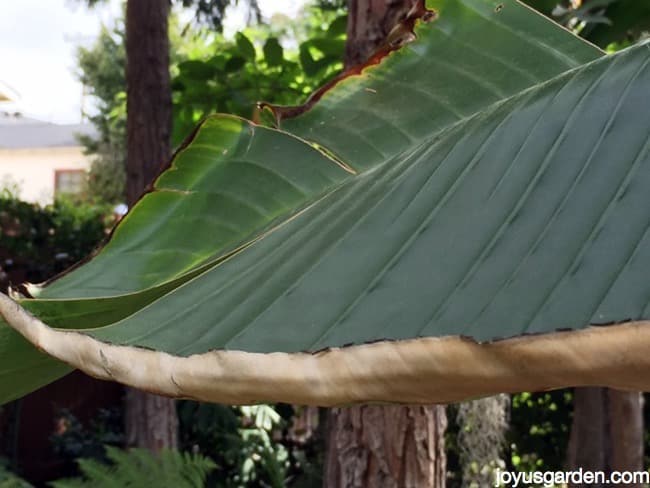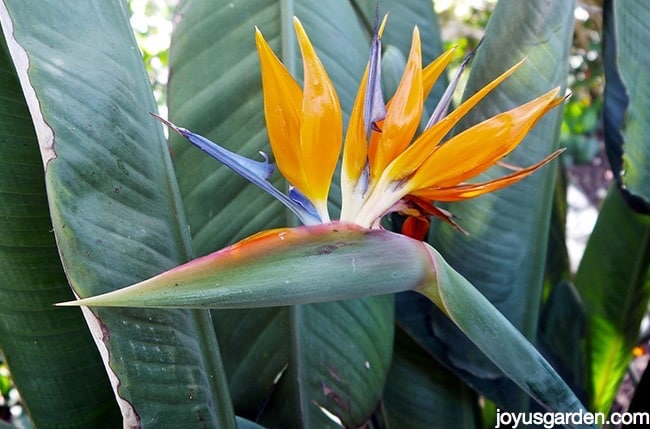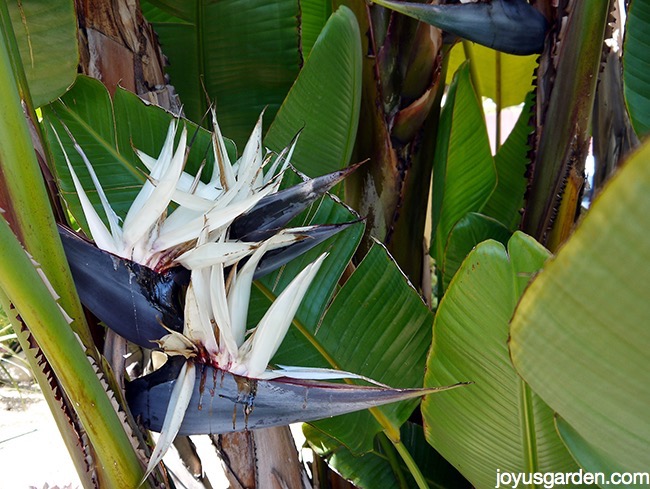为什么我的大天堂鸟叶片边缘变成了褐色?


问题是关于巨型天堂鸟的褐色叶缘。 造成这种情况的原因有几个,还有叶片开裂。
我在这里、通过视频和电子邮件收到了很多问题。 我决定开辟一个名为 "问妮儿 "的栏目,因为你们可能都有同样的问题和/或对答案感兴趣。 第一个问题来自帕蒂,是关于她的天堂巨鸟(Strelitzia nicolai)的。
See_also: 旭日芍药:点亮花园的多肉植物
上面的照片是帕蒂寄给我的,这些植物原产于南非的亚热带沿海森林,那里湿度较高,降雨较多。
在加利福尼亚,这种情况尤为明显,因为我们正处于特大干旱之中;是的,这很极端。 这些植物的边缘变成褐色很常见,但如今它们已经变得非常粗糙,因为连海洋层(又称雾)都几乎不存在了。
您可以在这段视频中看到我的巨型天堂鸟,以及您可能更熟悉的天堂鸟:
此外,你会看到很多巨型天堂鸟的叶子裂开,这是因为风的缘故。 和大多数植物一样,老叶会比嫩叶更容易变褐、变黄和裂开。
随着树龄的增长,叶子变得越来越褐,也越来越粗糙。 它们长成后根本不需要太多的水,但我们的冬季雨水不足,无法让它们度过干燥的几个月。 毕竟,它们确实需要一些水......而不是没有水。
因此,帕蒂,每隔两三个月给你的植物浇一次深水(直到我们的冬天下大雨为止),并给它铺上一层 2-3 英寸厚的有机堆肥,以帮助保持水分。 堆肥还能自然地肥沃土壤,使根系和植物生长得更强壮。
See_also: 凤仙花养护:如何在室内成功种植凤仙花底线
您可以在一定程度上减少褐色镶边,但如果您的天堂鸟巨型园位于多风地区,叶子就会裂开。 对此您无能为力!

我在这里介绍一下天堂鸟(Strelizia reginae),因为它们也有同样的问题。 它们的叶片较小,似乎更坚韧一些,所以没有那么明显。 我注意到城里的这些植物叶片有不少卷曲现象,因为我们这里太干燥了。
如果您碰巧养了一盆盆栽,而盆栽的边缘是棕色的,那是因为我们家里的空气比它们希望的要干燥得多。 普通家庭毕竟不是亚热带地区!
谢谢你的问题,帕蒂。 如果你们有任何关于植物、花卉和/或园艺的问题要问我,只需在本帖下方、视频评论区留言,或发送至 [email protected](如果你这样做,请在主题栏注明 "ask nell")。 现在,让我们开始园艺,让世界变得更美丽!
 顺便说一句,巨型天堂鸟花非常大,鸟儿们最喜欢从里面滴出的含糖花蜜!
顺便说一句,巨型天堂鸟花非常大,鸟儿们最喜欢从里面滴出的含糖花蜜! 本文章可能包含联盟链接。 您可以在此阅读我们的政策。 您购买产品的成本不会增加,但 Joy Us garden 会收取少量佣金。 感谢您帮助我们传播信息 & 让世界变得更美丽!

